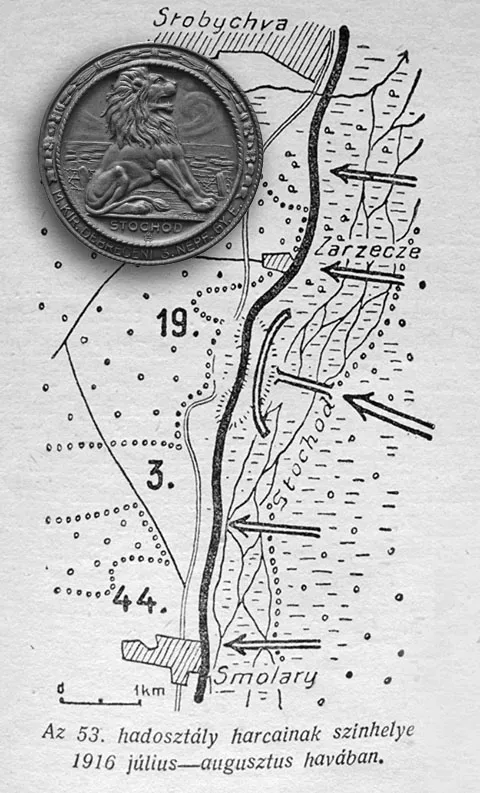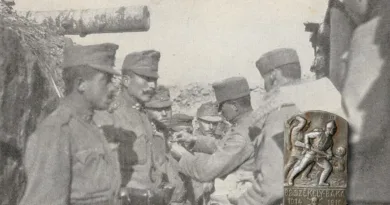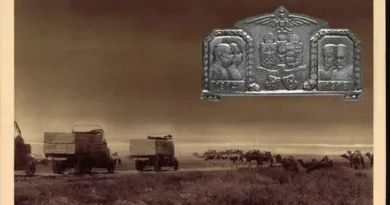August 1916 Stochod river
The great Russian offensive of June 1916 crushed the Austro-Hungarian 4th and 7th armies. In many places, even the strongest regiments were simply swept away by the multiple superiority. The deep front penetration was only stopped 50-60 kilometers behind the starting positions. But then the Russians continued to attack laterally. They tried to widen the break-in, perhaps to achieve another breakthrough. In the 128th Brigade of the 53rd Infantry Division, the 3rd Debrecen Insurgent Infantry Regiment was positioned north of the main Russian attack line along the Styr River. They were pulled back from there already on the fifth day of the Russian attack. The new main line of resistance was established along the Stochod River. The movement of the front is shown on the map of the Great War blog.

The regiment was stationed south of Zarzecze. The area is located directly south of the Pripyat Marsh, a sandy, often wet terrain. The insurgents in these positions repelled several Russian attacks until the end of August. In the northern direction, the Russians were unable to advance the front and reach towards the important transport hub Kovel. The insurgents of Debrecen, who stood so tall at the front, were named the “Lions of Stochod” by the German comrades who fought with them. The line of positions along the Stochod can be seen on the map sketch of the opening image. It should be mentioned that further south, in the area of the Russian bridgehead established in the “Stochod Elbow”, there was also enormous pressure, which was repelled by the 41st Division. The northern neighbor was the Hauer Cavalry Corps.

The badge featured in this post depicts the Stochod lion on the river bank. A particularly interesting feature of the badge is that instead of the usual laurel or oak leaf decoration, you can see reed buds. The representation of reeds refers to the wet terrain conditions there. The insignia of the 128th infantry brigade, which I wrote about here before, was similar in its motifs.



